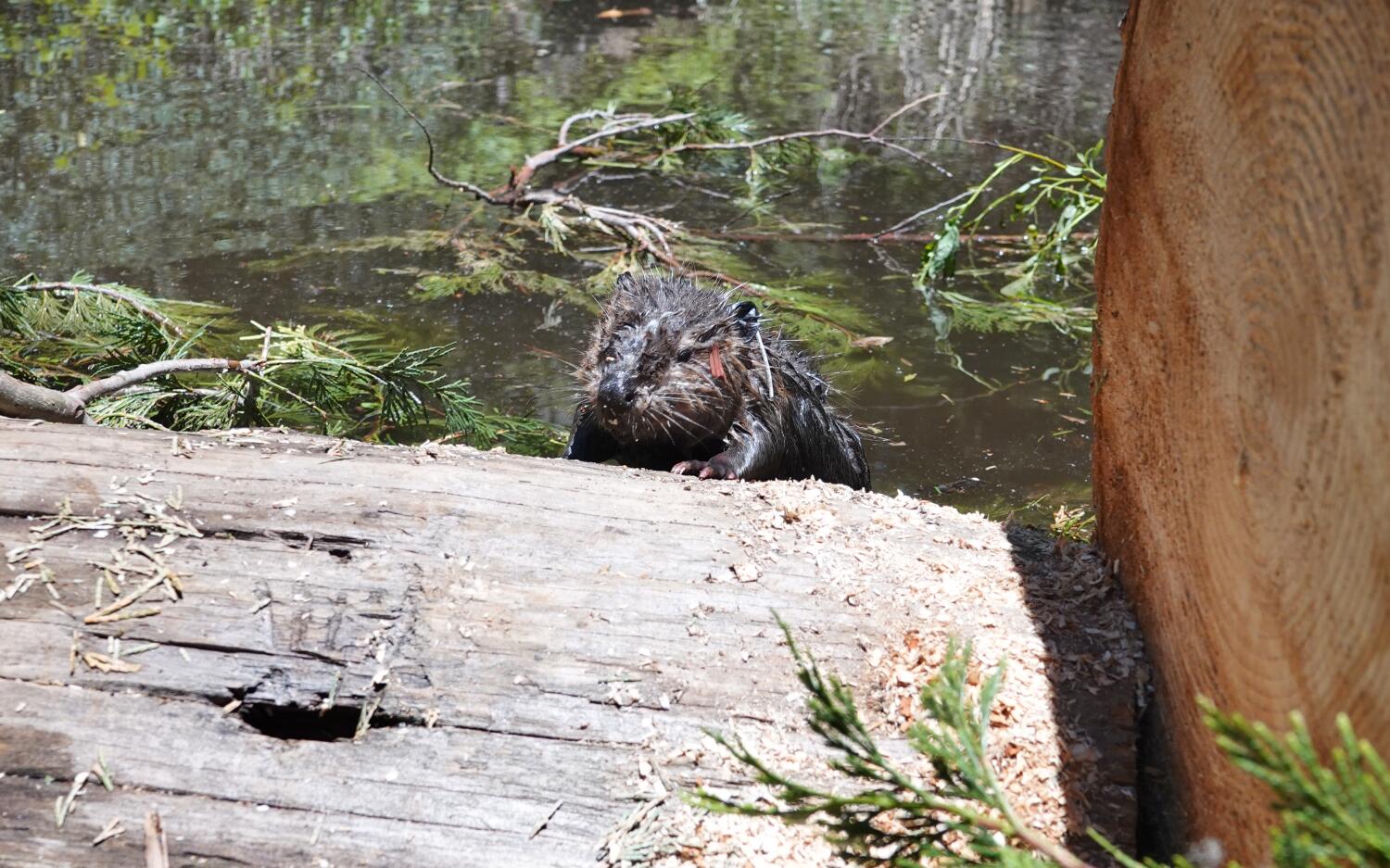
Beavers are a very precious object for the indigenous tribe of the Tule River. They are part of the stories of the California tribe and appear in ancient pictographs painted by their ancestors on the walls of a rock shelter in the Sierra Nevada mountains.
But when nine of the furry rodents recently slipped out of their cages and into the waterways of the Tule River reserve, they returned to a habitat where they had not been seen in nearly a century.
The California Department of Fish and Wildlife reported that a family of beavers (three adults, one subadult, and three hatchlings) were released into the South Fork Tule River watershed on June 12. Two additional beavers were released into Miner Creek on June 17.
The department conducted the releases in the Southern Sierra foothills in partnership with the tribe, whose 55,356-acre reservation is based in Porterville, California, in Tulare County.
Beavers were a common sight in parts of the Sierra before the arrival of Europeans, but by the 20th century, their numbers had been decimated by fur trappers and eradication efforts.
A decade ago, tribal leaders called for the animals’ return, prompted by traditional indigenous knowledge about the importance of beavers to the ecosystem, and inspired by 500- to 1,000-year-old images of beavers left in the Yokuts village site known as Painted Rock.
In 2022, Fish and Wildlife received state funding to begin a restoration program to prepare sites in California for the semi-aquatic animals.
Beavers help the environment by building dams that help keep landscapes well hydrated and more resistant to droughts and wildfires. That increased water retention could also protect the drinking water supply of the Tule River Indian Tribe, of which 80% comes from the river basin, the CDFW said.
“We have been through numerous droughts over the years; we were wondering how we can conserve, save water and get water here on our lands,” said Kenneth McDarment, a member of the Tule River Tribe and former tribal councilman, in a statement from the CDFW. “The answer was in our pictographs.”
California Natural Resources Secretary Wade Crowfoot said the beaver program was the result of an unprecedented effort by the state not only to protect the environment but also to support tribal sovereignty.
Elders from the Tachi Yokut and Tubatulabal tribes joined an elder from the Tule River Indian Tribe in a blessing ceremony to prepare the habitat for the arrival of beavers in June.
In a video captured by the Department of Fish and Wildlife, some of the beavers, which were brought in from state land in Merced County, can be seen checking out their new digs in the Sierra meadow at an elevation of 6,000 feet.
The slicked-back fur on the beavers’ heads and backs glistens in the sun as the agile swimmers cut through the murky waters between submerged evergreens, twigs and drifting shrubs. Possible building materials?
The beavers released last fall by CDFW in partnership with the Indigenous-led Maidu Summit Consortium in Plumas County wasted no time building lodges to live in and dams to protect themselves from predators and store food, a department spokeswoman said. Today those structures, in the tribal community known as Tásmam Koyóm, are large and well developed.
Fish and Wildlife officials intend to release more beavers into the Tule River watershed in the coming months and years.
“In our past, we treated these animals and others as vermin, as nuisances, and over time our culture banished them from the landscape,” said Charlton H. Bonham, director of the department. “That cannot be our future.”
